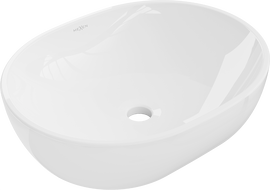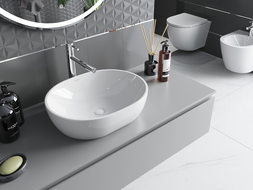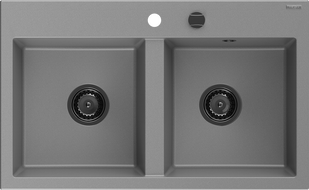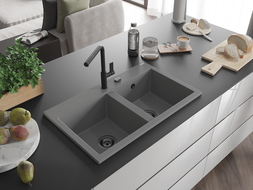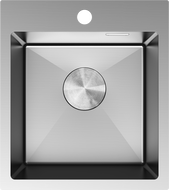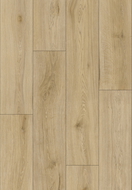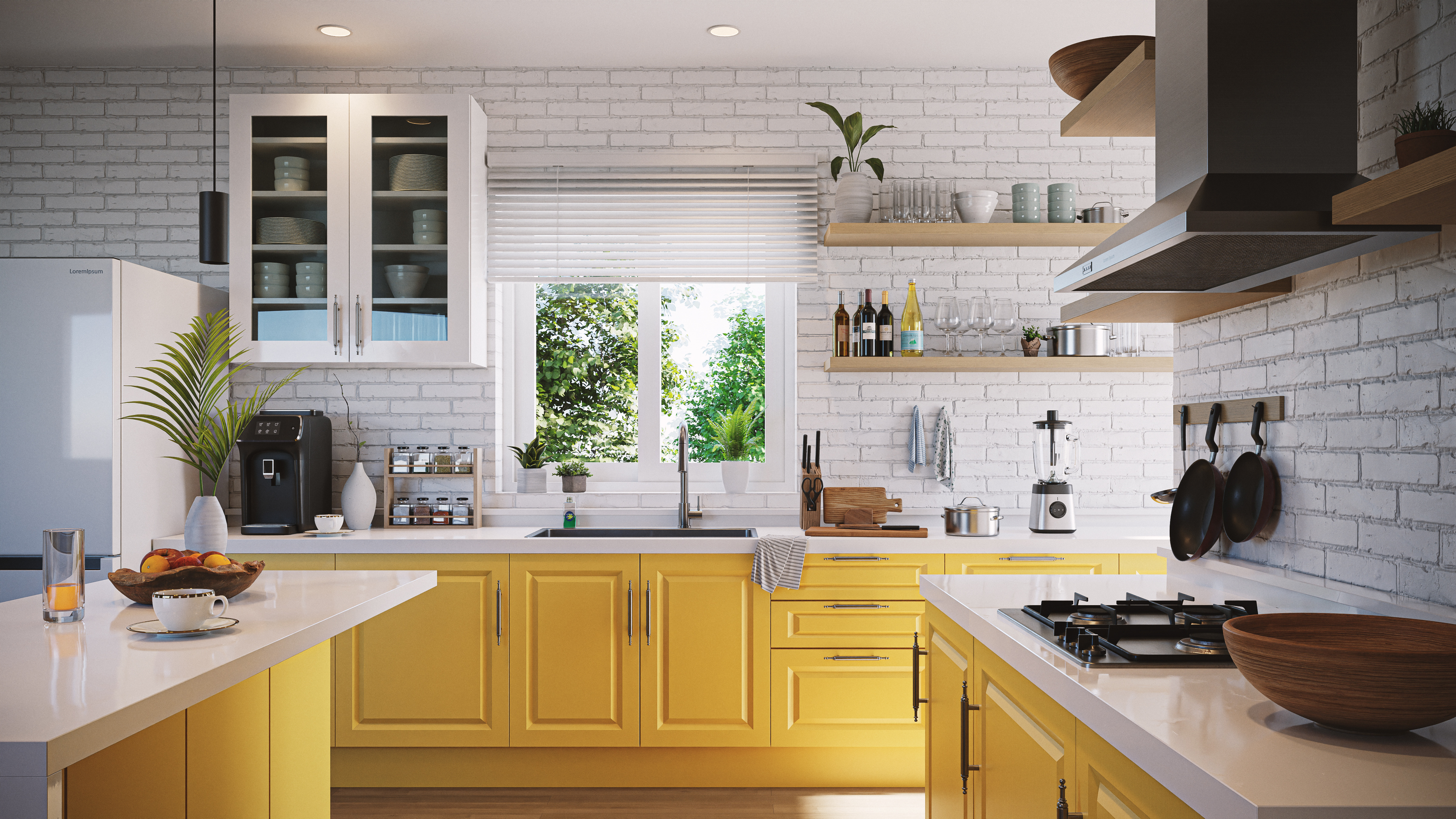
Considering kitchen design, more and more people are choosing to use brick instead of traditional tiles on the wall. A brick wall in the kitchen adds originality to the room and suits many types of interiors. Before deciding to use a brick wall in the kitchen, it's worth looking at the pros and cons of such a solution, the types of brick, and also understanding the differences between red brick and white brick. From our article, you'll learn what to pay attention to when choosing brick, whether it's worth using brick in the kitchen, how to protect a brick wall from dirt and grease, and how to clean it so it always looks new.
Is brick in the kitchen practical?
Brick in the kitchen certainly looks very impressive, but is it also practical? The most common placement of brick is the area on the wall between the countertop with the stove or sink and the kitchen's hanging cabinets. Therefore, many people wonder if such a surface will quickly get dirty during cooking. Brick on the wall in the kitchen is practical, as long as you remember a few basic principles. This material will last many years due to its durability and resistance. To enjoy a brick wall for a long time and not worry about greasy stains in a kitchen designed with brick, remember to properly protect it and regularly impregnate it. Brick itself is resistant to damage, moisture, water vapor, and high temperatures, and with proper care, it will also resist dirt.
How to arrange a brick wall in the kitchen?
Brick walls create a unique atmosphere in the interior, and traditional brick fits into various room arrangements. An ideal complement to bricks is, among others, wood. Red, black, or white brick can be used in a modern, rustic, or Scandinavian style interior. This material suits both raw and lacquered furniture finishes. Red brick will look perfect with white furniture, glossy or matte fronts, and a wooden countertop.
White brick combined with greys will work perfectly in a Scandinavian interior. Lacquered dark brick, combined with white lacquered furniture, will add modernity to the interior. Whereas red brick alongside architectural concrete will enhance the industrial atmosphere of the kitchen. Examples can be multiplied endlessly because brick is a very versatile material that fits virtually any interior. The final effect largely depends on the accessories we choose for the interior.
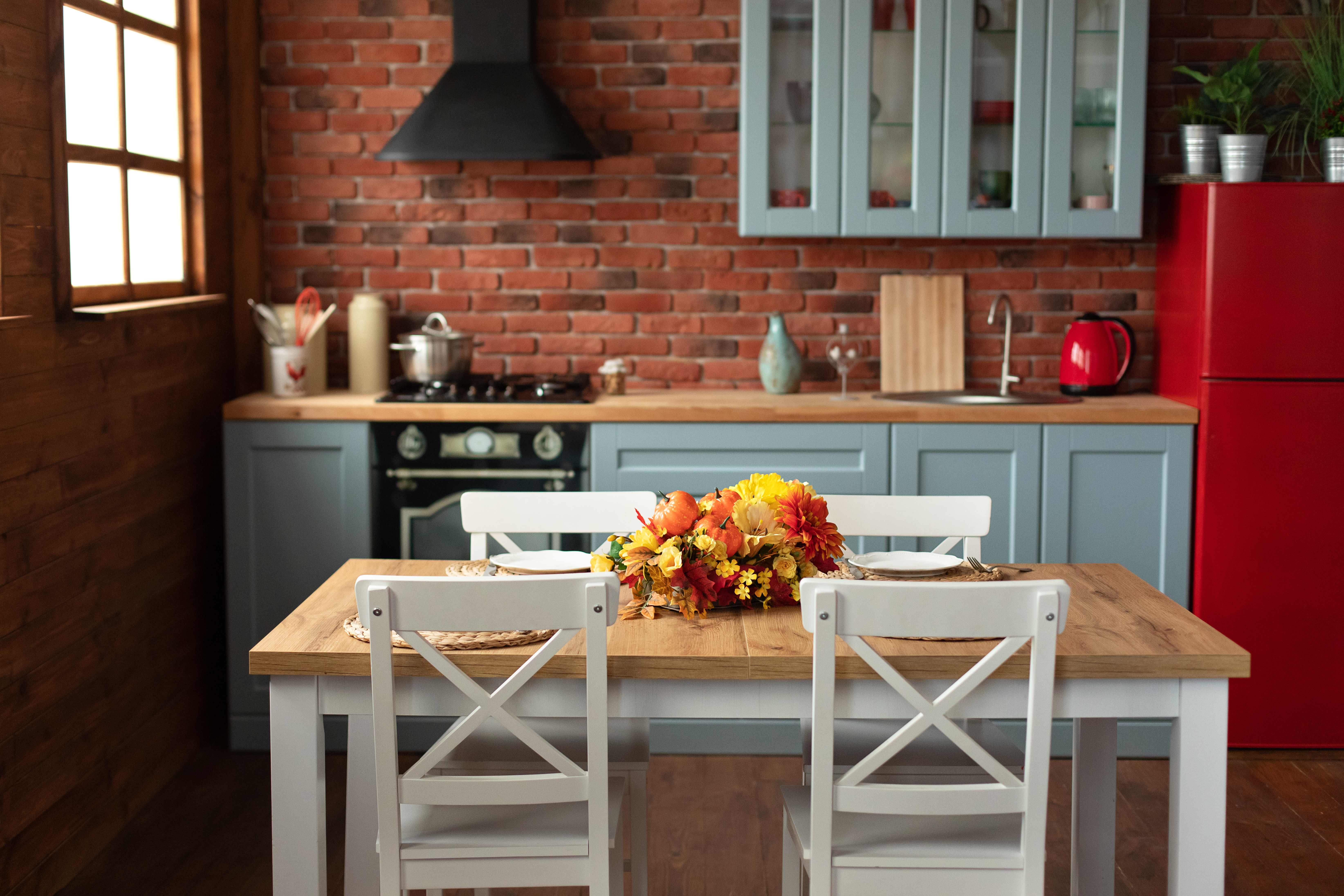
Brick in the kitchen. How to protect brick from grease?
To ensure the brick on the entire wall serves us for a long time, it should be properly protected with an impregnating agent against grease and dirt. The impregnating agent will help maintain cleanliness, prevent dirt and water from penetrating the brick, and make cleaning it simple. There are many different products on the market, e.g., silicone and acrylic impregnates that protect the surface from moisture and color loss. It's crucial to impregnate only clean surfaces, so before starting to impregnate, remove all dirt!
Are gypsum tiles suitable for the kitchen?
Gypsum tiles, imitating brick, are recommended rather for finishing dry interiors like bedrooms or living rooms. To use them in a room where they will be exposed to moisture, they must be properly and thoroughly impregnated to increase the bricks' resistance to grease or water. However, experts recommend using real brick in the kitchen.
Brick in the kitchen – advantages and disadvantages
The main advantages are the impressive appearance, versatility, and variety of the brick itself. It combines excellently with many architectural styles, colors, and materials, creating a pleasant ambience in the room. Both white, red, or black brick looks good in any arrangement and combines perfectly with wood, steel, metal, or concrete. An additional advantage is that old brick can be easily transformed by painting it a different color. Brick in the kitchen is a great solution in the kitchen space as it is one of the more practical finishing materials. It is durable, solid, and natural. Brick is resistant to mechanical damage, fading, steam, or grease. Properly secured and maintained, it will last for years. Additional advantages of brick are its soundproofing and thermal insulation properties.
What color brick for the wall?
The most popular brick colors are red, white, and black. White brick on the wall in the kitchen will play a central role in a Scandinavian-style interior. Red brick fits well into industrial, retro, and modern interiors. Black brick combines excellently with concrete. The final look of the kitchen with brick walls largely depends on the accessories used in the room.



